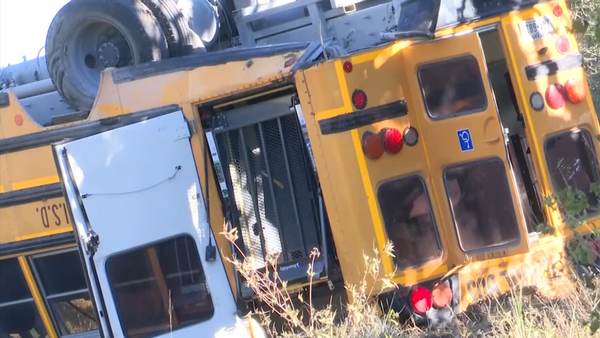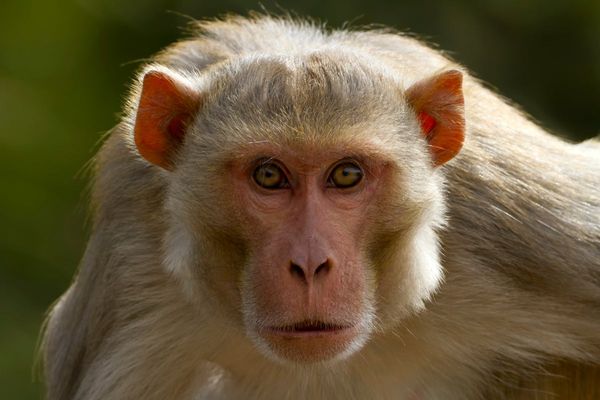
Ukraine faced its toughest week so far this year on the eastern front, where its defenders lost more ground to Russian forces but committed enormous resources to holding Bakhmut, a coal-mining town that has acquired emblematic importance to both sides.
Russian troops have been launching probing attacks on a wide front in Donetsk, half of which they now occupy. But their main effort has been to take Bakhmut, whose eastern outskirts they hold.
“[We are] storming house by house, square metre by square metre. Hard work is going on,” said Yevgeny Prigozhin, the financier behind Wagner paramilitary company, which is heavily involved in the fighting for Bakhmut.
But Russian forces have become bogged down in this fight, and in the 51st week of the war, they changed tactics.
On February 9, it became apparent that Russia had begun an attempt to choke off Bakhmut from further resupply.
“Blocking of Ukrainian supplies began in the area of Chasov Yar and Berkhovka,” a Russian military reporter said, referring to two settlements through which Bakhmut’s lines of communication run.
“If this happens, Bakhmut will be in a tactical encirclement, and Ukrainian troops will be completely cut off from the supply of ammunition, medicines and fuel.”
The next day Britain’s Ministry of Defence said Wagner forces appeared to have advanced 2-3km (1-2 miles) around the north of Bakhmut in three days – a remarkably rapid push in a battle where front lines have barely moved for months.
It said they were now threatening the E40, Bakhmut’s northbound highway connecting it to Sloviansk.
Russian news agency Tass quoted Donetsk officials as saying that Moscow’s forces were in control of “all” access roads to Bakhmut, including the local T0504, which runs into the city from the west.
But the truth turns out to be more complicated.
A Ukrainian military analyst said supplies were still getting through, something confirmed by Russian military reporter “Rybar”, who said Russian possession of the E40 and T0504 did not constitute operational encirclement.
“Thanks to the network of branched ring roads in the fields between the main routes, Ukrainian formations almost unhindered transfer reinforcements to the crucible of the Bakhmut meat grinder,” Rybar wrote.
Rybar also belied the claim that the E40 was taken or even under Russian fire control. He said Ukraine was preparing to tactically withdraw from Paraskoviivka in order to make a firmer stand at neighbouring Berkhovka, a way station on the E40 highway through which it was still able to supply Bakhmut with ammunition.
Prigozhin confirmed the Ukrainian resupply of men and ammunition.
“In all directions the enemy is becoming more active, pulling up more and more new reserves. Every day, from 300 to 500 new fighters approach Bakhmut in all directions. Artillery fire intensifies every day,” Prigozhin said.
Russian forces attacked a semicircle of settlements north, northeast, south and west of Bakhmut on February 12-13 in an effort to complete their encirclement, but it was not working.
“There are no conditions for encircling the enemy in the northern regions,” Prigozhin said.
Prigozhin also told a military reporter that Russia was continuing to face stiff resistance in Bakhmut itself.
“It is probably too early to say that we are close,” the Wagner chief said of taking Bakhmut. “There are many roads out and fewer roads in. Ukrainian troops are well trained.”
Ukrainian eastern forces spokesman Serhiy Cherevaty said the two sides had clashed 17 times within Bakhmut on February 14, and reported hundreds of casualties on the Russian side, 205 killed and 217 wounded – a glimpse into the intensity of the fighting.
Despite the obvious political importance, both sides were placing on Bakhmut, Ukraine publicly downplayed the battle.
“The main goal of Russian troops remains to achieve at least some tactical success in eastern Ukraine,” Ukrainian military intelligence representative Andriy Chernyak told the Kyiv Post. But Russia lacked the manpower to mount anything resembling the February 24 invasion last year, he said.
Russia did have some success in its encirclement effort.
Krasna Hora fell to Wagner fighters on February 12, Prigozhin said. This was confirmed by pictures of Wagner Group fighters there.
But as has happened before in this war, the claim of victory became a bone of contention between Wagner paramilitaries and the Russian defence ministry, which announced the capture the next day, saying “volunteers of assault detachments” took it.
The battle for Kreminna
On February 15, Russia’s defence ministry claimed a breakthrough in the Luhansk region, at the northern end of the front. “During the offensive, Ukrainian troops randomly retreated to a distance of up to 3 km,” Russia’s defence ministry said on the Telegram messaging app.
Luhansk Governor Serhiy Haidai said “attacks are coming from different directions in waves”, though he denied that Russian forces had reached the administrative border of the Luhansk region.
The attack may have come from Kreminna, where days earlier the Institute for the Study of War had said Russia was sending a better class of equipment to facilitate an advance towards Lyman, in Donetsk, a city Russia lost to a Ukrainian counteroffensive last September.
The Russian defence ministry said it was deploying the TOS-1 thermobaric multiple launch rocket system to the area, and posted footage showing a destroyed Russian BMPT “Terminator” armoured fighting vehicle 8km (5 miles) south of Kreminna.
Russian forces had made incremental advances on the northern end of the front the previous day. Geolocated images showed Russian tanks operating in Ploshchanka, just north of Kreminna, where Ukrainian forces said they expected a new offensive.
Haidai said Russian forces and equipment were amassing there.
“They see this task as the easiest, which is why they are preparing a massive offensive,” he wrote.
“We see how they are sending more troops, more weapons, more capabilities,” NATO Secretary-General Jens Stoltenberg said. “The reality is that we are seeing the start [of a new offensive] already.”
Divisions within the alliance
A Washington Post story on February 13 leaked disagreements between senior US officials and Ukraine on prioritising Bakhmut.
“American military analysts and planners have argued that it is unrealistic to simultaneously defend Bakhmut and launch a spring counteroffensive to retake what the United States views as more critical territory,” the Post story said.
Ukrainian President Volodymyr Zelenskyy has said the moral blow of losing Bakhmut would be great, and has decided to prioritise its defence.
Unnamed sources in the Post story were also quoted as warning that US military aid might not be sustained at present levels for long.
“We will continue to try to impress upon them that we can’t do anything and everything forever,” a senior administration official reportedly said. “’As long as it takes’ pertains to the amount of conflict,” the official said. “It doesn’t pertain to the amount of assistance.”
The report earned a stern rebuke from US Secretary of State Antony Blinken the next day.
“If we ratify the seizure of land by another country and say ‘that’s okay, you can go in and take it by force and keep it’, that will open a Pandora’s box around the world for would-be aggressors that will say, ‘Well, we’ll do the same thing and get away with it,'” Blinken told NPR’s Morning Edition.
Leaking any signs of weakness in the alliance supporting Ukraine was also folly, said a leading strategy professor.
“You DON’T telegraph to the world – and above all to the Russians – that you are getting ready to undercut your dependent ally,” tweeted Eliot A Cohen, professor of foreign and defence policy at Johns Hopkins University’s School of Advanced International Studies. “An attempt to impose on Ukraine a deal with Russia that reinforces their losses would not merely be immoral: it would be an act of strategic imbecility.”
Ukraine has said it means to eject Russia from all the territory it has occupied since 2014, including the eastern regions of Luhansk and Donetsk, as well as Crimea.
Some US and European officials are uneasy about that, believing it would trigger a violent response, perhaps including the use of nuclear weapons by Russia.
For example, with the war drawing towards its one-year mark, Europe’s leaders announced their support for Ukraine “remains unwavering”, and that they will continue to provide military support to Ukraine “for as long as it takes”.
But they defined the goal of that aid vaguely, as “a just peace based on respect for Ukraine’s sovereignty and territorial integrity”, not a return to the borders of Ukraine Russia recognised in 1991.
An air war?
Zelenskyy ended a tour of London, Paris and Brussels on February 9, requesting fourth-generation F-16 fighter jets.
The US has said it will not provide them, although some of Ukraine’s other allies have indicated they might.
Speaking to those allies gathered in Brussels on February 14, US defence secretary, Lloyd Austin, said there was a real danger that Russia would now bank on its superiority in the air, but that Ukraine’s response should be air defences.
“We do know Russia has substantial aircraft … and a lot of capability left,” said Austin. “We want to make sure they have the ability to protect themselves in the event Russia decides to introduce its air force into the fight.”
“The Russian land forces are pretty depleted so it’s the best indication that they will turn this into an air fight,” two defence officials told the Financial Times. “If the Ukrainians are going to survive they need to have as many air defence capabilities and as much ammunition … as possible.”







